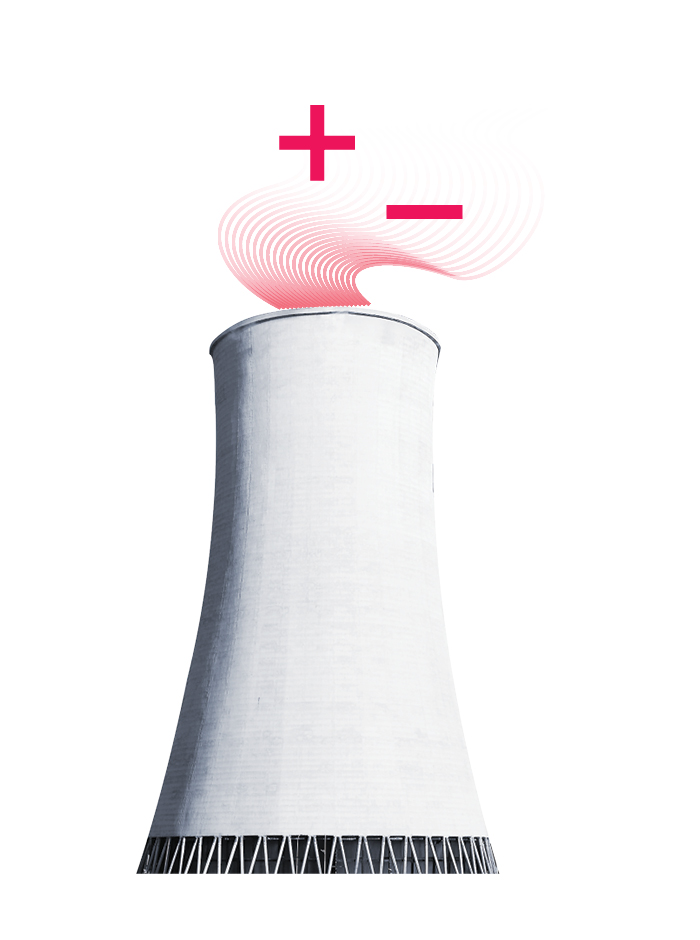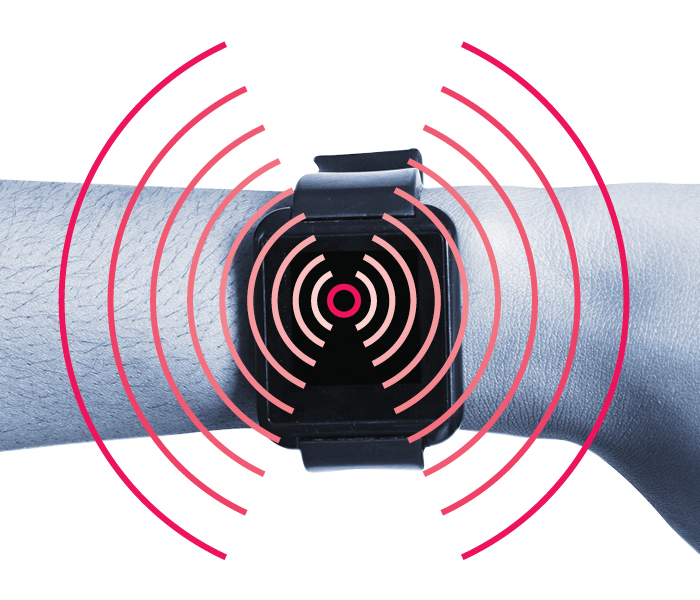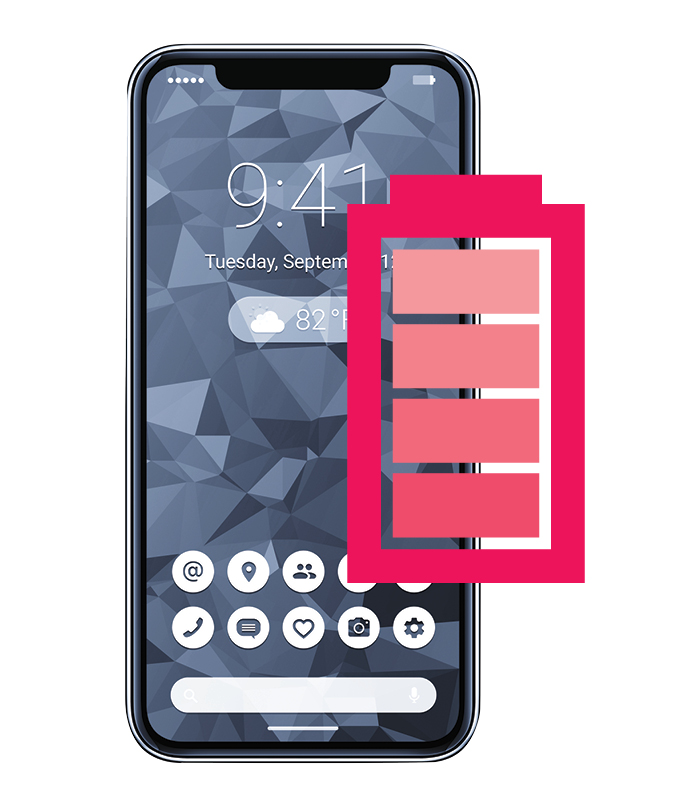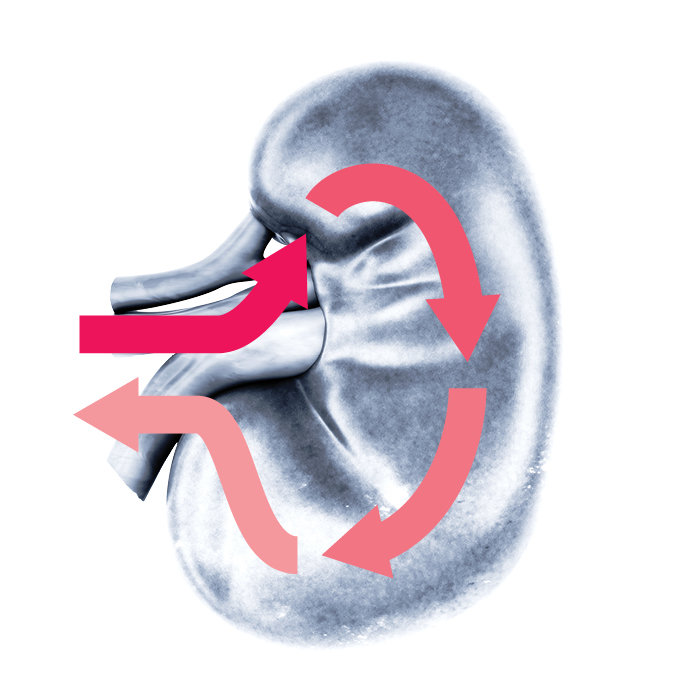
_Yury Gogotsi
Gogotsi is the Distinguished University and Bach professor in the College of Engineering and director of the A.J. Drexel Nanomaterials Institute.

_Kapil Dandekar
Dandekar is a professor of electrical and computer engineering in the College of Engineering

_Babak Anasori
Anasori is a research associate in the A.J. Drexel Nanomaterials Institute.

_Michael Ghidiu
PhD materials science and engineering ’17

_Michel Barsoum
Barsoum is a distinguished professor in the College of Engineering.
The story of how Drexel came to be the home of an amazing new material that has sparked investigations all around the world dates back to 2011, when researchers in Drexel’s Department of Materials Science and Engineering were working on a Department of Energy (DoE) grant to make electrode materials for batteries.
For over nine months, the two College of Engineering principal investigators on the grant, Distinguished Professor Michel Barsoum and Distinguished University and Charles T. and Ruth M. Bach Professor Yury Gogotsi, experimented with using the highly conductive MAX phases, layered materials with both ceramic and metal properties discovered by Barsoum in the ’90s, as lithium anodes.
But nothing seemed to be working.
Everything changed, however, when graduate research student Michael Naguib (PhD ’14), now an assistant professor at Tulane University, added hydrofluoric acid to one of the MAX phases. The combination created an atoms-thin material (also known as two-dimensional, or 2D, materials) composed of titanium and carbon that behaved like a conductive metal — a missing component in the world of 2D materials. The same acid process also worked with lithium. By the end of his doctorate studies, he had introduced more than a dozen new two-dimensional compositions from MAX phases precursors.
“As soon as we made this finding, we knew it was going to become important,” says Gogotsi. “We just didn’t know how important.”
The researchers named their finding MXene, which is pronounced like “Maxine” and gets its name from its chemical shorthand of “M” for metal (like titanium) and “X” (for carbon and/or nitrogen). Since the discovery — and the paper announcing the discovery, which has been cited over 1,000 times to date — the potential for MXenes has exploded. Researchers from more than 40 countries around the world (and several departments here at Drexel) are studying this family of materials. More than 600 international and U.S. patent applications related to the breakthrough material have been filed.
While discovering a new material is impressive enough to be considered a lifetime achievement, Gogotsi and Barsoum’s labs have developed and tested dozens of new MXenes over the years. They’ve gained new insights into how the material behaves and can function, both in its originally intended use (improving energy storage) as well as other applications as far-reaching and wide-ranging as can be.
“The application space is absurd,” says Barsoum. “There are so many opportunities, and this is just the beginning.”
The University has worked with the researchers to protect the intellectual property related to MXene for present and future commercial use and licensing agreements. Drexel’s MXene patent portfolio now includes four issued U.S. patents that cover broad composition of matter claims, with approximately 30 additional pending international and U.S. patent applications that cover systems, devices, applications and methods of manufacture.
What follows are just a handful of the potential applications for MXene being studied at Drexel.
No More Electromagnetic Pollution
Did you ever notice your TV buzzing when your cell phone is near, or hear your engine rev through the radio? It’s caused by radio waves stemming from devices that create, carry and/or use an electric current. This electromagnetic interference stops when MXene is sprayed on the components inside the devices.
“MXene can be made 10 times thinner as a protective layer in cables and devices compared to conventional metal, creating a thin and light shield,” says Gogotsi, who proposed the idea and led this research in 2016. “We believe MXenes are going to be the next generation of shielding materials for portable, flexible and wearable electronics.”
Spray-On Antennas
Installing an antenna could be as easy as applying perfume with MXenes. Invisibly thin, spray-on antennas could be used in new applications in smart technology, wearables and “internet of things” devices.
In 2018, Gogotsi and a team of researchers in the A.J. Drexel Nanomaterials Institute teamed up with Kapil Dandekar, director of the Drexel Wireless Systems Lab, to study how MXenes make antennas smaller and lighter than those made of traditional metals like gold, silver and aluminum.
“The ability to spray an antenna on a flexible substrate or make it optically transparent means that we could have a lot of new places to set up networks — there are new applications and new ways of collecting data that we can’t even imagine at the moment,” says Dandekar.
“Further research on using materials from the MXene family in wireless communication may enable fully transparent electronics and greatly improved wearable devices that will support the active lifestyles we are living,” says Babak Anasori (PhD ’14), a research assistant professor in the A.J. Drexel Nanomaterials Institute.
Conductive Clay
Michael Ghidiu discovered MXene clay in 2014 while testing a new method for making MXenes by using a fluoride salt and hydrochloric acid to etch aluminum out of MAX phases.
The resulting material could be easily molded into a variety of shapes and sizes like clay, and could also store an impressive electrical charge.
Potentially, this conductive clay could be used to improve batteries in cell phones and cars, as well as supercapacitors.
“It’s basically something that never existed before,” says Michel Barsoum.
Wearable Kidneys
Americans with kidney disease are forced to stay put, sitting for hours at a time for several days a week attached to a dialysis machine undergoing a very painful, expensive and time-consuming procedure.
For more than three decades, biomedical engineers and doctors have searched for a more portable version of the dialysis machine — but the large volume of water required to cleanse blood of urea, a waste product that builds in failing kidneys, has hindered their success.
In 2018, Drexel researchers working with colleagues in England and China found that MXenes can efficiently absorb urea. Being small and lightweight, it’s possible they could also be incorporated into wearable artificial kidney applications, which would give dialysis patients the freedom to move around.
“Like a sponge can take and absorb everything, MXenes can absorb molecules,” says Gogotsi.
Sensors That Sniff
Chemicals in the air can signal everything from fire to carbon monoxide to hidden explosive devices. With MXenes, they could signal the presence of disease in a person’s breath, too.
MXene changes its electrical conductivity in the presence of the chemical it’s designed to detect — and only when that particular chemical
is present.
“If a molecule squeezes between two layers of MXenes and pushes them aside, the conductivity changes just because electrons have more difficulty jumping from layer to layer,” says Gogotsi.
In 2018, researchers from Drexel and the Korea Advanced Institute of Science and Technology found that MXenes can pick up chemicals (like ammonia and acetone, which are indicators of ulcers and diabetes, respectively) in much lower traces than sensors currently being used in medical diagnostics. They can also detect multiple types of cancer, cirrhosis, multiple sclerosis and kidney disease. If MXenes can spot these diseases in lower concentrations during a patient’s breath analysis, they are more likely to be diagnosed and treated at earlier stages.






